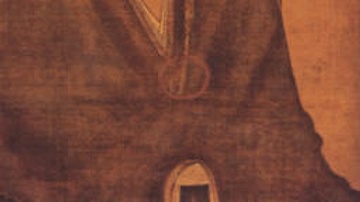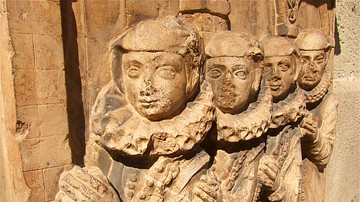Review

| Rating: | |
|---|---|
| Title: | The Bright Ages: A New History of Medieval Europe |
| Author: | Matthew Gabriele & David M. Perry |
| Audience: | General Public |
| Difficulty: | Medium |
| Publisher: | Harper Perennial |
| Published: | 2022 |
| Pages: | 336 |
"The Bright Ages" dispels the common myth that the Middle Ages were dark, backward and brutal. The book weaves a new history of the Middle Ages, examining over a 1000 years from the 5th to the 16th centuries, arguing that the "Dark Ages" are a modern ideological myth and that the Middle Ages were far more luminous, tolerant and diverse than they are commonly believed to be.
Each chapter of the book examines key developments in time and space across Medieval Europe, starting and ending in Ravenna, Italy. It covers:
- the late Western Roman Empire
- the Byzantine Empire,
- the Goths,
- Anglo-Saxon Britain,
- the Franks,
- the Vikings,
- France,
- the Black Death,
- the Crusades,
- Christian-Muslim-Jewish relations in Spain,
- the Caliphate,
- Hildegard von Bingen,
- monastic orders,
- the Golden Horde,
- the Black Death
and much more.
The book centers on several compelling arguments that are not commonly considered when thinking of the Middle Ages.
First, the authors argue that the Roman Empire did not fall in the Middle Ages. The so-called "fall" of the Western Roman Empire was not understood by medieval people to be an end to the Roman Empire. It was merely a shifting of the centre of power from Rome to Constantinople. In the medieval mind, the Roman Empire was alive, powerful and respected (until it finally fell at the very end of the Middle Ages in 1453). Equally, various rulers in the Middle Ages claimed a connection to the Roman Empire to justify their rule.
Second, the book argues that the Middle Ages were far more diverse and interconnected than most people believe. People moved freely and frequently between countries and cultures, both within Europe and between Europe, Africa and the Middle East. With them came ideas, knowledge and goods. The idea that, during the Middle Ages, Europe contained "purer" nations is an ideological fantasy conjured by nationalists:
Throughout the eighteenth and nineteenth centuries, imperialist European powers and their intellectuals (often the forerunners of, or scholars in medieval studies themselves!) sought a history for their new world order to justify and explain why whiteness –a modern idea, albeit with medieval roots– justified their domination of the world. They found the proto-nations of the Middle Ages useful as a past to point to for their modern origins, pointing to both medieval connections to Greece and Rome and the independence and distinct traditions of medieval politics. These modern thinkers used the fiction of Europe and the invented concept of "Western Civilization" as a thread to tie the modern world together.
Third, the book highlights at several points that power was less concentrated in male authority than commonly believed. Throughout the Middle Ages, women held positions of power and their power is attested in medieval primary sources. Abesses could be superiors of monks, kings wrote to Hildegard von Bingen for advice, Leif Erikson's sister led an expedition in Newfoundland, and some Queens were responsible for the Christianisation of kingdoms, to cite a few examples.
Finally, the book argues against the connotation of the term "medieval" signifying "backward". In fact, the authors show that even though religion played a more central role in society than in the modern era, the Middle Ages was a humane society concerned with what is moral and good, despite the cruelty that occurred in this era like in any other. The epilogue suggests that European colonisation represented the real "dark ages" by recounting a debate about whether the natives of the New World could be considered human and what rights the Spanish crown and landowners had over them.
Overall, The Bright Ages paints a new picture of the Middle Ages filled with nuance and diversity. Unlike popular Medieval tropes, the Middle Ages were far more complex and less dark than we commonly believe. The myth of the "Dark Ages" is a modern one, and to truly understand, we must dissociate from it.
Matthew Gabriele is a professor of history at Virginia Tech, and David Perry was a professor of Medieval History at Dominican University. The book is written with the general public in mind and is easy to read. Each chapter is engaging and many of them refer to key events in Medieval history that most readers would be familiar with. However, a reader with no knowledge of Medieval history might find the book hard to follow.
About the Reviewer
Cite This Work
APA Style
Crabben, J. v. d. (2024, November 12). The Bright Ages: A New History of Medieval Europe. World History Encyclopedia. Retrieved from https://www.worldhistory.org/review/484/the-bright-ages-a-new-history-of-medieval-europe/
Chicago Style
Crabben, Jan van der. "The Bright Ages: A New History of Medieval Europe." World History Encyclopedia. Last modified November 12, 2024. https://www.worldhistory.org/review/484/the-bright-ages-a-new-history-of-medieval-europe/.
MLA Style
Crabben, Jan van der. "The Bright Ages: A New History of Medieval Europe." World History Encyclopedia. World History Encyclopedia, 12 Nov 2024. Web. 30 Mar 2025.




